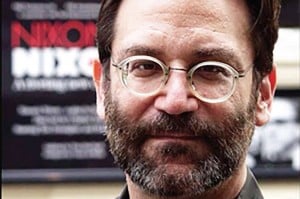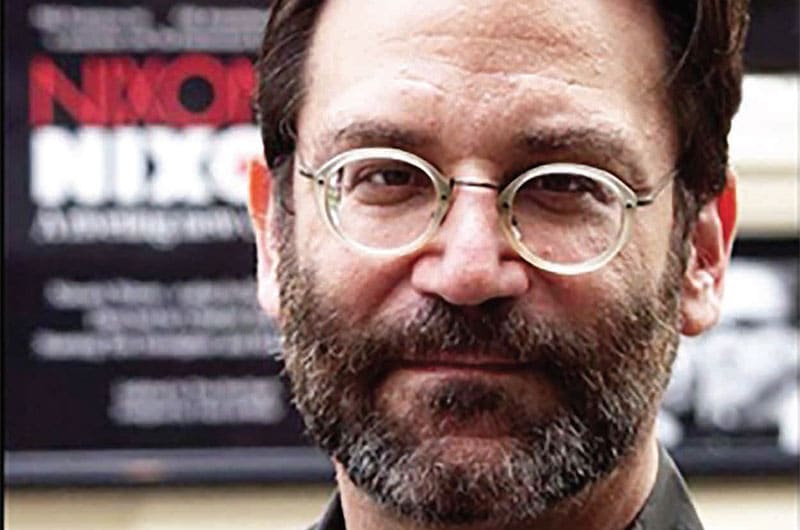
White Heron Executive Director and Co-Artistic Director Michael Kopko and White Heron President and Founder Lynne Bolton are thrilled that Martin Platt is directing their next show, opening this Saturday, Vanya and Sonia and Masha and Spike. Recently, Boulton sat down with Platt for a chat about theatre, his craft, and the play he is directing here on Nantucket…
LB: Martin, you won the Tony for this play. How did it feel to walk up on the stage to receive the award after a 40- year career in the theatre?
MP: It felt pretty good, I have to say. It was one of those things on my bucket list that I never thought would happen. Every year the Tony’s would go by and I’d think, “Well, its not going to happen this year”, so when it did it was a bit of an out of body experience.
LB: What was the process to find the play and then produce it?
MP: The play was originally commissioned by Lincoln Center Theatre and the McCarter theatre. Lincoln Center couldn’t move the play to Broadway that year so my partner David and I were approached about it. We saw the play and said yes—that would be a great idea. We actually met Chris Durang (the playwright) at a play we were producing on Broadway called An Oak Tree. Very strange English play where one of the two actors on stage (it was a play with only two actors) every night had to have never seen or read the play. It could be man/woman, any race, any age, and Chris Durang was one of the people who came in to do the play. That’s how we met him. I think he reminded us during the process for Vanya and Sonia and Masha and Spike that he didn’t like doing An Oak Tree very much.
LB: You have founded and run several professional non-profit theatres. Tell us about Alabama Shakespeare Festival. How did establishing an Equity theatre (now nationally renowned) in a small town in Alabama change the community?
MP: We made a small Southern town in Alabama a destination for theatre on a national scale. We began in a town called Aniston. It really put that town on the map. Aniston wasn’t an Old South town. It was developed after Reconstruction. So it was a town that was progressive – it had, for example, the only newspaper in the South that endorsed McGovern for President. We then moved the theatre to Montgomery. It remains to this day with great support from the local community but it has a national presence. That is certainly what you are hoping to do on Nantucket. We succeeded in Alabama. It became part of a huge cultural area and a real center for the community. In addition to theatre, we did concert series and ran an MFA program in theatre there. So we had an educational component as you will have with the Nantucket Theatre Institute. It began as a summer theatre and when we moved to Montgomery it became a year-round theatre because we had a facility that was built just for us.
LB: Tell us about Vanya and Sonia and Masha and Spike. What do you find most compelling about this play.
MP: Well, partly, and this is not essential for seeing the play, I know Chekov really well and the riffs on Chekov all through the play are really funny and sometimes wonderful and funny at the same time. The major Chekov plays are plays about families whose members turn out to have huge problems. Those problems don’t necessarily get solved during the play, but the characters do come to grips with their issues and figure out how to get onto the next stage of their lives. I think Chris Durang has, in a very curious way, melded threads from Chekov’s plays into a family — two siblings and one adopted sibling– all of whom have angst and disappointment about their lives but somehow come back together. And in the course of getting there, it’s very funny. I think because the problems these characters face are not huge on a world scale — they are not dying of horrible diseases, they are not going bankrupt or in the middle of a war, there is nothing horrible pending for any of these people — we find it funny that these people view their small problems as huge life crises—life and death issues. We all do that. Everything sees monumental in our own world, but seen from the outside they are trivial even silly. Chekov was so good at looking into human nature and the way people are to find those things that we think are ruining our lives but from the outside we know they shouldn’t be taken seriously. And I think Chris has mined that same vein so well and essentially created a Chekov play for the 21st century. The play is a minor comic miracle in that way.
LB: The designers for this show are professionals you have worked with in the past. Tell us a bit about the design concepts for the show.
MP: Bill Clarke is doing the set and we’ve worked together a lot. We start with what the play really needs. It is important in this play that it is somewhere in Bucks County, Pennsylvania — a bucolic but wealthy enclave somewhere in the northeast. The Broadway set was basically a replica of Chris Durang’s house in Bucks County. That was the in-joke about the set because Chris lived in it in real life. The play takes place, as many Chekov plays do, in the bridge between the country home and the countryside itself. In this case it’s a sunroom on the house. We know we need a certain amount of furniture and an entrance that leads to a driveway, another to a kitchen and a bathroom, and a staircase that goes up to the bedrooms. Those are
the things the show needs and then it was really trying to achieve the best arrangement of those elements to allow the play to flow. And then we needed to make clear the interior and exterior worlds of the play. The pond and trees outdoors would, in reality, be where the audience is sitting. So the design, once we’ve finished, really makes clear the three worlds – the pond and larger property, the environs close to the house and the sunroom and interiors of the house.
LB: Tell us about your next Broadway production?
MP: We have been working for a couple of years to do the first Broadway production of a play from 1968 called Dames at Sea. It’s a wonderful musical that made Bernadette Peters a star. We have finally acquired a Broadway theatre (the hardest thing about producing these days is getting the real estate to do your show in). We go into rehearsal for this musical on August 24, two days after Vanya and Sonia and Masha and Spike opens on Nantucket. And start performing September 24. In a Broadway sense it feels like we open tomorrow. I’m so pleased I could be with White Heron this summer just before we go into rehearsal for Dames at Sea. It’s an exciting summer!
The White Heron Theatre production of Vanya and Sonia and Masha and Spike directed by Tony Award- Winner Martin Platt opens this Saturday, August 22 in The Dreamland Theatre. Performances will be held August 22, 24, 25, 26, 31, and September 1, 2, 7, 8, and 9. Curtain time is 7:30 pm. Tickets are available at www.NantucketDreamland.org or by calling the White Heron Theatre Box Office at 508-325-5268.



